Related Research Articles
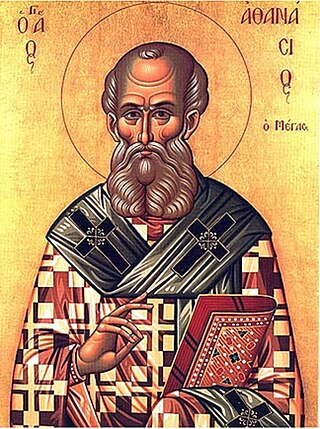
Athanasius I of Alexandria, also called Athanasius the Great, Athanasius the Confessor, or, among Coptic Christians, Athanasius the Apostolic, was a church father and the 20th pope of Alexandria. His intermittent episcopacy spanned 45 years, of which over 17 encompassed five exiles, when he was replaced on the order of four different Roman emperors. Athanasius was a Christian theologian, a Church Father, the chief defender of Trinitarianism against Arianism, and a noted Egyptian Christian leader of the fourth century.

Pope Shenouda III was the 117th Pope of Alexandria and Patriarch of the See of St. Mark the evangelist and apostle. His papacy lasted 40 years, 4 months, and 4 days from 14 November 1971 until his death.
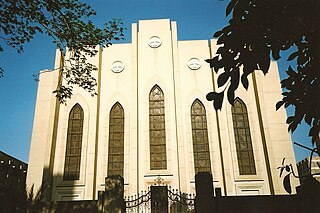
The Coptic Catholic Church is an Eastern Catholic particular Church in full communion with the Catholic Church. Along with the Ethiopian Catholic Church and Eritrean Catholic Church, it belongs to the Alexandrian liturgical tradition. Uniquely among the Alexandrian Rite Eastern Catholic liturgies, the Coptic Catholic Church uses the Coptic Rite and the Coptic language in its liturgy; the Ethiopian Catholic Church and Eritrean Catholic Church use the Ge'ez Rite.
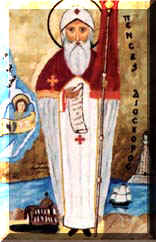
Dioscorus I, also known as Dioscorus the Great, was the pope of Alexandria and patriarch of the See of St. Mark who was deposed by the Council of Chalcedon in 451. He was recognized as patriarch by the Coptic Church until his death. He died in Gangra, Paphlagonia, in September 454. He is venerated as a saint by the Coptic and other Oriental Orthodox Churches.
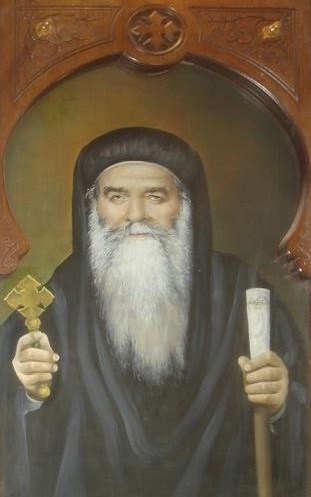
Pope Cyril VI of Alexandria also called Abba Kyrillos VI, Coptic: Ⲡⲁⲡⲁ Ⲁⲃⲃⲁ Ⲕⲩⲣⲓⲗⲗⲟⲥ ⲋ̅ ;, was the 116th Pope of Alexandria and Patriarch of the See of St. Mark from 10 May 1959 to his death.
Pope Alexander II of Alexandria was the 43rd Pope of Alexandria and Patriarch of the See of St. Mark.
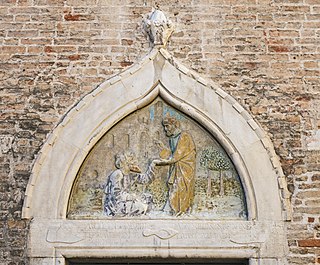
Pope Anianus was the 2nd Patriarch of Alexandria. He was ordained by Saint Mark the Evangelist, and was also the first convert Mark won to Christianity in the region.
Pope Avilius of Alexandria, was the 3rd Patriarch of Alexandria.

Pope Primus, also called Aprimos, was the 5th Pope and Patriarch of Alexandria.
Pope Julian (Yulianus) of Alexandria was the 11th Pope and Patriarch of Alexandria.
Pope Anastasius of Alexandria, 36th Pope of Alexandria & Patriarch of the See of St. Mark. During his reign, despite being barred from the city of Alexandria, he met with the Patriarch of Antioch as they worked to arrange the unification of their two churches.
Pope Benjamin I of Alexandria, 38th Pope of Alexandria & Patriarch of the See of St. Mark. He is regarded as one of the greatest patriarchs of the Coptic Church. Benjamin guided the Coptic church through a period of turmoil in Egyptian history that included the fall of Egypt to the Sassanid Empire, followed by Egypt's reconquest under the Byzantines, and finally the Arab Islamic Conquest in 642. After the Arab conquest Pope Benjamin, who was in exile, was allowed to return to Alexandria and resume the patriarchate.

Pope Demetrius II of Alexandria, 111th Pope of Alexandria & Patriarch of the See of St. Mark.
Pope John I of Alexandria, 29th Pope of Alexandria and Patriarch of the See of St. Mark.
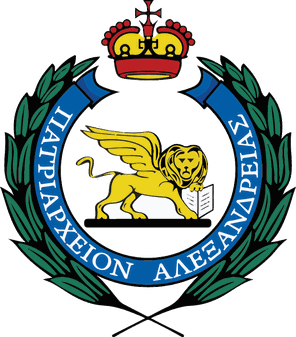
The Greek OrthodoxPatriarchate of Alexandria and all Africa, also known as the Greek Orthodox Church of Alexandria, is an autocephalous patriarchate that is part of the Eastern Orthodox Church. Its seat is in Alexandria and it has canonical responsibility for the entire African continent.
Athanasius I Gammolo was the Patriarch of Antioch and head of the Syriac Orthodox Church from 594/595 or 603 until his death in 631. He is commemorated as a saint by the Syriac Orthodox Church in the Martyrology of Rabban Sliba, and his feast day is 3 January.
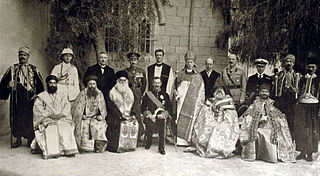
The Holy and Ancient Archdiocese of Jerusalem, All Palestine, and All the Near East or the Coptic Orthodox Patriarchate in Jerusalem, is a Metropolitan Archdiocese of the Coptic Orthodox Church, which is part of the wider communion of the Oriental Orthodox Church. It is headed by the Coptic Orthodox Metropolitan Archbishop of Jerusalem, the incumbent being Metropolitan Archbishop Antonious of Jerusalem since 2016. Its jurisdiction covers those Coptic Orthodox Christians living in the Near East; with churches and monasteries in the State of Palestine, the State of Kuwait, the Hashemite Kingdom of Jordan, the Lebanese Republic, the Syrian Arab Republic, and the Republic of Iraq. The adherents are largely of Coptic Egyptian descent, mainland Coptic migrants and their descendants. The archdiocese is based at St Anthony's Monastery, in the Christian Quarter of the Old City of Jerusalem, beside the Church of the Holy Sepulchre.
Hathor 30 - Coptic Calendar - Koiak 2
References
- ↑ "Tout 20 - The Departure of Pope Athanasius the Second, the Twenty-Eighth Patriarch of the See of St. Mark". Coptic Orthodox Church Network - Lives of Saints. Retrieved 24 November 2016.
